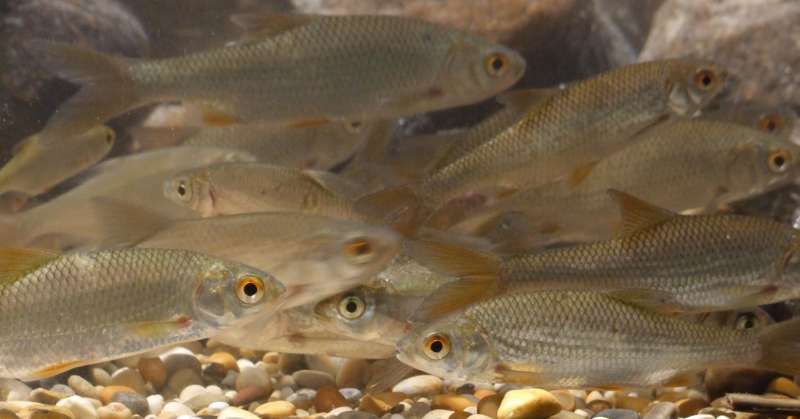Bravery may cost fish their lives

Fish that show bravery often become prey themselves, whereas shyer individuals survive to a greater extent. Researchers at Lund University in Sweden have now successfully established a connection between bold personalities and the risk of being killed by a predator in the wild.
The researchers marked common roaches, a widespread freshwater fish, and studied their personalities. After investigating which individuals then became food for cormorants, the biologists at Lund University were able to show that the bravest fish run twice the risk of being eaten compared to the shyest individuals.
Common roaches, just like human beings, are individuals with different personalities and traits. One of these is courage—and not all common roaches are equally bold.
For a long time, researchers have assumed that the inclination to expose oneself to risks is a compromise between the actual risk itself and any associated consequences on the one hand, and the potential reward on the other. Boldness and the willingness to take major risks are thus a strategy which can lead to something really tasty to eat or a partner with whom to mate. But it can also end badly.
Until recently, there have only been a few research findings from wild populations to support this assumption. That is, until now, when the biologists studied personalities among common roaches in Krankesjön lake in southern Sweden.

Captured common roaches were taken to a lab and placed in a dark concealed area. Then, the researchers measured how long it took each fish to swim out of the concealed area. The bolder the individual, the less time it took. Each common roach was subsequently implanted with a microchip and released in Krankesjön lake.
At the lake, plenty of fish-eating cormorants ate the tagged common roaches. The birds then regurgitated fully functioning microchips on the small island where they rest between searches for food. By using a portable reader, the researchers were able to identify which common roaches had fallen victim to the cormorants—the bolder or the shyer individuals.
Relating the behaviour of a certain individual to the risk of being killed by a predator is a major challenge. A number of previous studies have instead focused on how morphological characteristics (appearance and shape) are linked to the risk of being eaten by a predator.
"Our study is unique in that we focus on an important behaviour and not morphology, but also because we allow the interplay between predator and prey to take place in their natural habitat, their home lake", says Kaj Hulthén, one of the researchers behind the study.
More information: Kaj Hulthén et al. A predation cost to bold fish in the wild, Scientific Reports (2017). DOI: 10.1038/s41598-017-01270-w
Journal information: Scientific Reports
Provided by Lund University


















